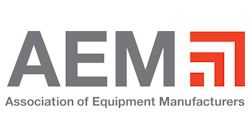The average operating lifespan of an excavator ranges from 8,000 to 10,000 hours. A 2008 survey indicated that approximately 66% of contractors will spend nearly 50% of the original excavator purchase price on repairs and parts before selling off the unit; and the remaining percentages will spend even more—with 14% willing to spend more than 100% of the initial price. When is this simply putting good money after bad? That is just one of the questions we posed to a number of excavator manufacturers. Next, we asked them for their top tips on how to maximize excavator life. We also asked them to address how all the productivity-plus features on new models will deliver the return on investment that justifies biting the bullet and going new. And finally we asked them about the art of the deal—and about the incentives to buy. So that’s the gist of this roundtable discussion. Read on and ask yourself the question—deal or no deal?
Participants in the manufacturer’s roundtable include the following excavator experts:
- Tom Connor, excavator product specialist for Bobcat
- Kent R. Pellegrini, product application specialist, excavators, for Caterpillar Inc.
- Dan Kakareka, assistant service manager for Kobelco Construction Machinery America
- Paul Golevicz, brand marketing manager for Kobelco Construction Machinery America
- Doug Morris, product marketing manager, excavators, for Komatsu America Corp.
- David Steger, national product manager for Takeuchi Manufacturing
- Steve Brezinski, product manager, heavy equipment, for Terex Construction Americas
- Jay Baudhuin, compact equipment product manager for Wacker Neuson
- Bill Metzgar, assistant training manager for Doosan Infracore America
- Keith Rohrbacker, product manager for Kubota Tractor Corp.
- Rod Boyer, director customer support for Link-Belt
Particularly in tougher economic times, contractors are spending more and more on excavator repairs and parts to extend the use of the equipment past its average life span. When is this simply putting good money after bad?
Connor: A machine sitting in the shop being repaired is not on the job site making money. If a contractor wants to extend the life of a machine through repairs and parts, he needs to carefully weigh the downtime of that machine versus the work a new machine could be doing on the job site.
Today’s machines are designed to work longer and harder while also being easy to service and maintain. Bobcat has always designed ease of serviceability into its machines, making daily maintenance quick and simple to access so that a contractor can get the most out of his investment by putting the machine to work. Bobcat’s M-Series excavators are also designed with longer service intervals, again to maximize the time the machine is operating and increase its productivity.
Contractors should also consider fuel efficiency. Newer models are designed with fuel efficiency in mind, and this means significant savings over the long run. Combined with more productivity, easier service and less maintenance, a newer model will pay for itself over time.
Pellegrini: Bottom line, the answer to this question must be based on a thorough analysis of the machine condition and its applications. Cat dealer personnel are trained and equipped to do such an analysis, and their shops are equipped to do complete machine rebuilds.
Kakareka: Residual value can only be determined accurately with respect to all of the factors. Further complicating that equation is that the factors involved—baseline purchase cost, replacement value and repair costs—change almost continuously. One must make certain to include downtime as a portion of the repair costs, as this is quite often the limiting factor in a contractor’s decision to purchase new equipment or repair an existing item or fleet.
Morris: The best practice that allows contractors to effectively decide if extending the life of an excavator is more effective than replacing it is closely monitoring the owning and operating costs of their machine. Generally as a machine gets older, it becomes more expensive to operate. But there are many factors to consider when determining replacement versus repair, such as parts and labor costs, major component life, resale value, depreciation, and additional productivity and fuel consumption features on new machines.
Steger: Repairing an excavator may make sense if it is a minimal expense for a machine that is infrequently used. Also, downtime is critical when you’re working against a deadline. Unreliable equipment can be devastating to your business—and you can bet that your competitors won’t mind if they are called for the next job or, worse yet, called to finish the job that you couldn’t because of old, unreliable equipment. Factors such as resale value, downtime, and financing cost must be considered, in addition to operating, maintenance and repair cost.
Brezinski: Excavator life span may vary depending on machine hours, operating conditions, and the preventative maintenance practices of the business. The level of anticipated equipment utilization and production will likely weigh into the decision to extend the life of the equipment. When the machine is on the job and the contractor’s daily production activities are being impacted by service issues, a different approach than repair may be in order, and rental or purchase may be considered. However when utilization and production are down in the midst of a slow economy, repair may be a more likely alternative.Baudhuin: If a contractor is spending more time fixing a machine than working with it, the machine should be replaced. It is time to replace equipment when major components (swivel joint; track tensioning fork/rail; engine; or hydraulic pump) start to affect operation. A benchmark is not to spend more than 30% of the replacement cost of the machine on any single repair, or more than 50% of the replacement cost for repairs over a one-year period.
Metzgar: When repairs to an excavator start to go beyond normal day-to-day maintenance or repairs do not give the contractor the confidence that production levels can be maintained, it may be time to replace the excavator. Good maintenance practices should always be implemented to extend the life of any machine purchase. This will give the contractor confidence anytime he bids a job that a particular piece of equipment may be used, so they will have confidence that they will not experience excessive downtime due to machine repairs. Or that when they do get ready to trade or sell a used machine, that top dollar can be made.
Rohrbacker: It’s important to keep track of expenses first of all. Many don’t keep records. Neither the company nor I have a set rule. And so many factors impact their evaluation. If I had to apply a rule, it is 50% to 75% of replacement cost. Don’t forget to include in your calculations consideration for the cost of downtime, transport to the shop and back, and replacement rental equipment costs when making your estimate.
In addition to changing and monitoring hydraulic oil at the proper levels, what are other top maintenance initiatives that can maximize excavator life?
Boyer: LBX Co. [Link-Belt] has developed and implemented an LBX Fluid Analysis Program that is designed to maximize excavator and component life. This program tests and monitors fuel, gear oil, hydraulic oil, and engine oil—and it assists in identifying minor problems before they become major failures. The first step is a baseline-sampling program that precedes regularly scheduled testing to maintain peak performance. Other weekly maintenance items include: 1) grease/lube the excavator attachment; 2) visual inspection of weld seams, joints, and stress points; 3) cleaning the undercarriage components—the rollers, sprockets, idlers, et cetera; and 4) maintaining clean fuel from the storage containers to the excavator fuel-delivery systems—particularly on units with Tier III engines and beyond.
Connor: Operators should use caution when reconnecting hydraulic attachment quick-couplers. Always inspect the face of each coupler for dirt and debris, wiping clean as necessary to avoid ingress of contaminants. There is a similar story when greasing the machine. Always wipe the grease fittings clean of debris prior to connecting the grease gun. This will help prevent contaminated grease from being forced into the pivot joint. Also, follow maintenance guidelines for flushing and replacing engine coolant. Engine coolant will break down over time, diminishing its anti-corrosive qualities and cooling capabilities.
Pellegrini: Being proactive in identifying machine health problems and taking action on them before components fail is the key to extending the life of the excavator. Following the recommended service intervals stated in the “Operation and Maintenance Manual” helps prevent problems, and fluids analysis and thorough inspection procedures help identify minor problems before they become major ones.Metzgar: A good oil-sampling schedule should be implemented at the start of any machine purchase. This will allow the owner keep repair cost down due to seeing any issue before it becomes catastrophic.
Kakareka: All fluids and lubricants must be taken just as seriously as hydraulic fluid. Monitoring hydraulic fluid in an excavator must include a fluid sampling and analysis program—the results of which should be used to determine change intervals. This is particularly true when using auxiliary attachments and becomes exponentially more important when these attachments are changed frequently. This can be a significant source of contamination to the unit.
Furthermore, when specifying equipment, one should seriously consider automatic lubrication systems, which remove the human factor from the maintenance equation. It will ensure that bearings, bushings and swing gears have the maximum possible productive life.
Also, one often-neglected maintenance task is track tensioning. Too often we see machines where the tracks slap continuously as the machine travels. Since many excavators do not travel a great deal, this is often overlooked in regular monitoring programs. Proper tensioning will ensure that the chain and rollers function to their maximum life cycle.
Morris: Another system that is important to maintain in order to extend the life of the machine is the cooling system. This includes monitoring the coolant, preventing any type of leak, and keeping the coolers clean from external plugging.
Steger: It’s true that hydraulic system upkeep should receive top priority in an excavator but there are many other components that should also receive your attention. The engine, for example, typically drives hydraulic pumps, the alternator, water pump, and air conditioning. If the fuel system is not maintained, it will produce less power and could cause other failures within the engine. If the fan and drive belts are not maintained, or the coolers are not cleaned, overheating can occur. When the machines aren’t greased properly, premature wear will take years off the machine’s useful life, making scrap iron out of your machine in record time. Regular cleaning means more than just having a clean machine. It allows you the chance to look at every part of the machine and identify small or potential problems before they cause major downtime. You can spot leaks, and find hoses that are wearing or blistering before they fail, as well as identify any loose or missing hardware.
Rohrbacker: The most important thing to do is follow the daily and preventive maintenance procedures in the operator’s manuals. I regularly interact with customers that have 10,000 hours and more on their machines, and seven or more years on our excavators by following the manual’s recommendations.There are lubricants in other components like travel motors to consider. If you run them low on oil, repair can be expensive.
Rubber track life can easily hit 5,000 hours with proper care and operation. Without paying attention, they can fail prematurely and increase operating costs.
How can all the productivity and efficiency features on new excavator models deliver the return on investment that justifies biting the bullet and buying a new machine?
Connor: New productivity features are going to add to operator efficiency, which ultimately leads to more work done on the job site. Increased productivity affects the bottom line, whether it means a machine can move on to the next job site quicker or that a job is finished sooner, so both crews and machines can take on the next project.
Bobcat M-Series excavators feature several new features that affect both operator efficiency and machine performance to increase productivity. They include increased operator comfort with redesigned cabs, smoother controls, and reduced noise levels. Machine productivity is being increased with a new engine and pump package that delivers improved performance in a lighter, more compact machine.
Pellegrini: Consider the equipment needed to complete the job in the scheduled time. Is the machine sized, equipped and configured correctly for the work you do? If so, good for you! If not, then what other machines have to be used due to an undersized or oversized machine? What are the added costs? Buying new allows the contractor to configure the machine for the most efficient operation in the application.
New Cat machines are backed by factory warranties and supported by local Cat dealers. New machines will have low repair costs and high mechanical availability, which helps keep jobs on time and on budget. And all new Cat excavators meet current US EPA emissions standards—and meeting these regulations is required for work in some locales.
Rohrbacker: The productivity and efficiency enhancements allow contractors to complete the job more quickly. Contractors can quote a flat rate on the job, finish more quickly, and then pocket the extra profits from the time saved. They’re then ready to move on to the next job, completing more jobs in a certain time span than their competition can.My reply today is a little different from two years ago. There are fewer jobs available today so the next job is not as readily available. Perhaps the benefit is mitigated.
Golevicz: A contractor may not know the true operating cost of equipment in his current fleet. Check with your maintenance manager and operators to get an idea of fuel usage, performance, downtime, and maintenance requirements. Once you acquire this information, it’s quite possible that on an annualized basis a new excavator can actually cost less to own and operate. New engine technology, filtration systems, operating software, and other product enhancements may very well make that old excavator a financial liability.
Metzgar: Anytime you can monitor the production hours, and fuel efficiency, the operator has the ability to adjust the way he or she operates to make sure they are running the machine at its capacity and doing it efficiently as possible, keeping fuel costs down and saving time on the job.
Morris: It depends upon the age of the existing equipment. Excavators are continually improved as new models are introduced. One technological feature on all Komatsu excavators that can truly be a benefit when buying a new unit is Komtrax, Komatsu’s Web-based machine-monitoring system. It provides a wealth of information that will not only inform contractors of maintenance and service information through the Web or through e-mail alerts, but can also provide fleet management information, such as utilization and fuel consumption. Komtrax is a tool that allows contractors to effectively manage and monitor their fleets, so performance can be maximized and operating costs can be reduced.
Steger: Manufacturers are building more productivity and economy into new excavators to help lower the total cost of ownership. If you haven’t looked at new excavators in a while, there have been a lot changes in recent years, from the biggest mass excavator to the smallest mini-excavator. These advances include better fuel economy, more machine versatility, greater control of attachments, and lower maintenance costs.
Machines that use less fuel through advancements in machine and engine controls will reduce one of the largest daily operating expenses. This savings can be applied to the machine payment or to the bottom line.
New machines have more auxiliary hydraulic options, some with multiple circuits Kobelcoto easily control the most advanced attachments. Higher flow rates are also becoming more popular for running a wider variety of attachments.
Finally, modern machines often have extended service and drain intervals on components such as hydraulics, engine and coolant, reducing the frequency in which these components are serviced and reducing maintenance costs.
Brezinski: Productivity features are important in building a case for investment to meet onsite productivity requirements and project time constraints. ROI will be considered in the context of the hours the machine is working and revenue generated. So whether a customer bites the bullet during tough economic times ultimately depends on the financial situation of the company and the anticipated level of current and future projects.
Baudhuin: New excavators have Tier III–compliant engines, which are more fuel-efficient. They also have more efficient hydraulic systems and tighter joints and bearings that require less power to operate. Less power means lower fuel consumption and, therefore, less money out of pocket. New machines are also designed with better operator ergonomics and comfort. This translates into a more productive operator.
What about the ability to get a good deal? What programs and incentives are currently in place?
Connor: Manufacturers are continually offering special purchase programs and incentives on new machines. For example, with the launch of the new M-Series compact excavators, Bobcat offered special programs for both its new and current models. A contractor should visit the local dealer to check for offers and to let them know what is needed in a new machine purchase. Current offers from Bobcat can also be found online at www.bobcat.com/offers.
Rohrbacker: The market’s smaller, and we’re all trying to keep our share. In the current economic environment brand loyalty may not be as prevalent as in better times.
To keep that share, look for manufacturers to offer low-rate financing, as low as 0% for 48 months and longer.
Watch out for low rates and short terms. Monitor your payment levels. If you have great cash flow you may wish to consider cash in lieu of financing. There are large discounts on certain models as manufacturers look to reduce dealer inventories of those models (aged inventory, old models being moved to allow room for new models, et cetera) Extended warranty is sometimes included for free. There may be generous trade-in allowances. Your favorite or most needed attachments may have discounts.
If you have delayed purchase of some attachments, perhaps now is a great opportunity.
Consider that purchase of an attachment may open up opportunities through additional services to expand your applications and jobs.
Pellegrini: Cat dealers are offering many financing packages that can help contractors add new machines to their fleets. Caterpillar Financial provides the financing that enables the customer to have the complete package provided by the dealer of choice. Also, Caterpillar Rental offers rental purchase options.
Golevicz: Contractors should always contact their local, reputable dealer for available deals on excavators. Kobelco offers a large range of attractive financing programs and other incentives, which typically change on a quarterly basis.
It is crucial that the contractor does his homework in advance. Knowing what you need and what you can afford to pay is the basis for walking away with the best product at a good price. Know your priorities and consider all aspects. Price may not be your only determinant. How important is having service and parts availability? What about the location of the dealer to the operation or work being done?
Note that Kobelco has launched an online tool that makes it easy for new equipment buyers to calculate their potential savings through the federal government’s extended 2009 tax incentives. Possible benefits include the 50% bonus first-year depreciation, as well as the expanded Section 179 Expense Election, which allows companies to expense up to $250,000 in equipment purchases as long as they don’t spend more than $800,000 during the tax year. The tool also includes a feature that allows buyers to compare different financing options available to them.
It can be accessed at www.kobelcoamerica.com.
Steger: The deals of a lifetime that manufacturers are offering won’t be around forever. As sales increase and dealer/manufacturer inventory diminishes, the ultra-low rates and unbelievable discounts will be a thing of the past. I expect that there will be good deals to be had through the end of 2009 as manufacturers do everything possible to heal the wounds from the first three quarters—but the new year will likely be the end of the trend. Demand will be on the rise as businesses across the nation begin to recover and prosper once again. If you’re in the market for new equipment, now is the time to be searching and acting so you can get the make, model and features you want. If you wait too long, you may have to settle on something you will later regret.
The Decision is YoursDeal or no deal? Whether you’re buying a new excavator or repairing and rebuilding existing units, renting or buying used equipment, manufacturers agree that contractors must do what is right for their businesses—after considering all the factors and looking at all the financial parameters. And, as the economy recovers, certainly your options will increase and your decisions will be a whole lot easier to make.









